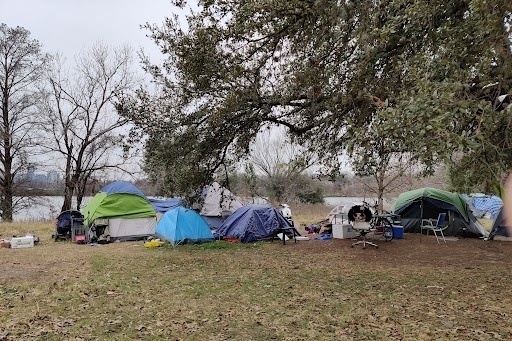Seven out of the 10 most common ZIP codes homeless people cite as being their last place of residence were identified as gentrified areas by a UT research study, according to ECHO—a nonprofit that uses research-based strategies to end homelessness in Austin and Travis County.
Those ZIP codes include 78741, 78723, 78744, 78702, 78753, 78721 and 78752. Approximately 73.3%-90.3% of the homeless population in those ZIP codes is nonwhite, according to ECHO.
“We can see gentrification playing directly into homelessness, and this shows us both the need for prevention and strategies that keep people in their homes,” said Joao Paulo Connolly, organizing director for the Austin Justice Coalition.
Further, six of the 10 most common ZIP codes homeless people cite as the area they were born and raised in were also identified as gentrified by the same study, according to ECHO. Those ZIP codes include 78702, 78744, 78723, 78721, 78753 and 78741. ECHO estimates the percentage of nonwhite people experiencing homelessness in those ZIP codes is between 81.6%-97.8%
“We’re definitely seeing a lot of people reporting losing their housing and falling into homelessness in East Austin,” said Claire Burrus, ECHO’s Research and Evaluation manager.
Almost all the ZIP codes homeless people reported being displaced from are east of I-35.
“The people experiencing homelessness in our community are from our community, and have been displaced by our policies and lack of policies to address housing equity and justice,” Connolly said.
The data was procured from 6,241 coordinated assessments between July 2020 and January 2022, according to ECHO.
“This wasn’t a sample; it was truly everyone coming through the system for several months,” Burrus said.
Coordinated assessments are administered by 39 different organizations, such as LifeWorks and Integral Care, and evaluate a homeless person's specific housing needs, ECHO Director of Strategy Quiana Fisher said. Coordinated assessments also ask questions that help collect data on racial, ethnic and gender disparities in homelessness, Fisher said.
According to ECHO’s July 2022 racial disparities report, the probability of a Black person experiencing homelessness in Travis County is six times higher than a white person. While the report shows the population of homeless Black and white people are both around 30%, those numbers are inconsistent with the overall population of Travis County, which is about 79% white and 9% Black.
Transgender and gender-nonconforming people are also more likely to experience homelessness, Fisher said.
“The hope of this project is to make sure that we are really understanding [the disparity of Black people experiencing homelessness] and that we are really making sure that we are honoring their experience and that we are equipping those [service providers] with funding and other opportunities,” Fisher said.





